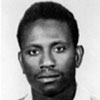|
Momodou

Denmark
11804 Posts |
 Posted - 27 Jul 2022 : 17:16:39 Posted - 27 Jul 2022 : 17:16:39



|
KAUR/COWER/KAREN: THE OLD SETTLEMENT ON THE EDGE OF THE RIVER IN WHAT IS TODAY KNOWN AS LOWER SALOUM
By Dembo Fatty
Kaur is a very ancient settlement in today’s Gambia and some oral sources believe it was in existence some 800 years ago. We do have written records as far back as 1684 mentioning the settlement of Kaur.
But the interesting thing is that there was no specific settlement called Kaur. Three settlements sprouted there first by the Touray which became Touray Kunda, then the Janneh which became Janneh Kunda and the settlement of Jakar. Janneh Kunda was founded by Karim Janneh and Baba Janneh; Touray Kunda was founded by Fode Touray.
All three settlements had their own Alkalos which means they were independent. Now one wonders why Kaur instead of calling each settlement by its own name since they each had their own Alkalos.
Fode Touray would marry the widow of the King of Saloum and had two sons by her.
Janneh Kunda was destroyed by Biram Cisse one time General of Maba Jahou Bah, the Jihadist but who refused to recognize Sait Mati Bah, the son of Maba when Maba died.
Janneh Kunda sided with Sait Matti and in revenge, Biram Cisse burnt down Janneh Kunda and for seven years no one lived there. Sait Matti would then fight Biram Cisse and then rebuild Janneh Kunda. Janneh Kunda would then have two colonial chiefs first by Arfang Madi Janneh also called Arfang Masajo Janneh and when he died in 1918, he was replaced by Abdulai Janneh who was dismissed in 1924.
Since no suitable successor was available in Janneh Kunda, the chieftaincy was moved to Ballangharr and Nderi Jabu Touray was appointed but he too was dismissed in 1926 and replaced by Bara Touray who served for 17 years as Chief until 1942. Bara was previously the Head Messenger to the District Commissioner Macklin but had no lineage claim to Sajanko Chorowada ruling branch of the Touray of Ballangharr.
The last Sajanko Chorowada king of the Ballangharr Touray before colonialism came was Sambou Khomani Touray who was killed in battle and his family once lived in Kataba (Gambia) but moved to Kerr Nderi in Senegal when the border with Senegal was finalized and was appointed Chief there by the French only to come back to the Gambian side when he was offered a position by the British.
In 1898, the name Njuka Kani Nderi Touray appeared in the colonial records as Sub-Chief of Ballangharr which was part of District No. 4, which was part of Saloum. He is probably the only Chief in Gambian history to hold Chieftaincy title both in Senegal and Gambia.
WHY KAUR OR DAANDEH MAYO?
The thesis is that these three independent settlements later became known as Kaur collectively even though up to this date, three Alkalos are still the norm.
We may have to travel back in time to the era before the state of Saloum was created. There lived a very powerful religious leader called Yelli Banna who had power, wealth (cattle) and influence in the region to such an extent that some writers referred to him as a King.
The Serere however do not recognize him as king but because of his influence, Mbegan Ndure, a famous Serere personality attacked and killed Yelli Banna. It was only after the death of Yelli Banna did the Serere unite around Mbegan Ndure to create a state of which Mbegan was recognized by them as their first King.
Yelli Banna was said to have lived in the area near where Kaur is today and as a herdsman, he gave instructions to his people in Fulani to meet him at the river side as thus: NGAREN KAWREN DAANDEH MAYO” which translates to “ come and lets meet at the river’s edge”. His settlement was said to be called Gonkoro which probably is not in existence but it will not be a bad idea to try to locate this settlement even in ruins.
A lot of historical importance is attached to this settlement because, the history of Saloum as a unified Serere state greatly depended on the destruction of this settlement.
Ngaren = Come. Generally used when addressing a large assembly
Kawren = lets meet.
Daandeh = means neck and in this instance, it could mean edge.
Maayo= River.
This how Kaur is also called Daandeh Maayo up to this day.
The Fulani word Kawren is said to be corrupted to Kaur. This theory was advanced by the late AE Cham Joof.
Kaur is quite an example of many settlements with independent Alkalos yet identify to a common name. The only similarity in my research is Bathurst, which was a collection of settlements on St Mary’s Island that in the beginning were separate settlements.
|
A clear conscience fears no accusation - proverb from Sierra Leone |
|

